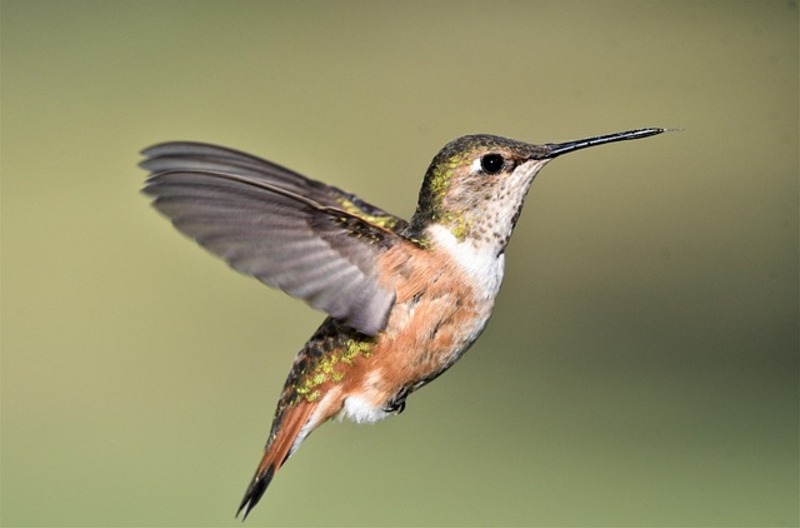
Types of Hummingbirds
Published on June 26, 2025
Hummingbirds, with their iridescent plumage, incredible aerial acrobatics, and tiny size, are among the most captivating birds on Earth. Found exclusively in the Americas, these avian jewels are known for their rapid wing beats, which can reach up to 80 times per second, creating the distinctive humming sound that gives them their name. With over 360 recognized species, hummingbirds exhibit an astonishing diversity in size, color, and bill shape, each uniquely adapted to its environment and preferred food sources.
This guide will explore some of the most fascinating types of hummingbirds, highlighting their unique characteristics and the regions they inhabit.
1. Bee Hummingbird (Mellisuga helenae)
- Size: Smallest bird in the world, about 2.24 inches (5.7 cm) long.
- Habitat: Endemic to Cuba.
- Key Features: Weighs less than a penny. Males have iridescent red-pink heads and throats during breeding season.
- Fun Fact: Its heart beats up to 1,260 times per minute.
2. Ruby-throated Hummingbird (Archilochus colubris)
- Size: Medium, about 3-3.5 inches (7.6-8.9 cm) long.
- Habitat: Eastern North America, migrating to Central America for winter.
- Key Features: Males have a brilliant, iridescent ruby-red throat. Females and juveniles have white throats.
- Fun Fact: They are the only hummingbird species that regularly breeds in eastern North America.
3. Rufous Hummingbird (Selasphorus rufus)
- Size: Medium, about 3.1-3.5 inches (7.9-8.9 cm) long.
- Habitat: Breeds in western North America, migrates along the Pacific Coast to Mexico.
- Key Features: Males are fiery orange-red with a white patch behind the eye. Known for their aggressive and territorial nature.
- Fun Fact: They have one of the longest migratory journeys of any bird, traveling up to 3,900 miles (6,276 km) one way.
4. Anna's Hummingbird (Calypte anna)
- Size: Medium, about 3.9-4.3 inches (9.9-10.9 cm) long.
- Habitat: Pacific Coast of North America, from British Columbia to Baja California.
- Key Features: Males have an iridescent rose-pink crown and gorget (throat patch). They are one of the few hummingbird species that sing.
- Fun Fact: They are year-round residents in many parts of their range, even in cooler climates.
5. Broad-tailed Hummingbird (Selasphorus platycercus)
- Size: Medium, about 4 inches (10 cm) long.
- Habitat: Western North America, particularly in mountainous regions.
- Key Features: Males have a rose-magenta gorget and produce a distinctive loud, metallic trill with their wings during flight.
- Fun Fact: They often breed at high altitudes, up to 10,000 feet (3,000 meters).
6. Sword-billed Hummingbird (Ensifera ensifera)
- Size: Large, about 5.5-6.7 inches (14-17 cm) long, with a bill that can be up to 4 inches (10 cm) long.
- Habitat: Andes Mountains of South America.
- Key Features: Possesses the longest bill relative to its body size of any bird, often longer than its entire body.
- Fun Fact: Its bill is so long that it must preen itself with its feet. It specializes in feeding from flowers with long corollas.
7. Magnificent Hummingbird (Eugenes fulgens)
- Size: Large, about 4.3-5.5 inches (11-14 cm) long.
- Habitat: Highlands from the southwestern United States to western Panama.
- Key Features: Males have a dark green body, a brilliant violet crown, and a glittering green gorget.
- Fun Fact: Despite its name, it was formerly known as Rivoli's Hummingbird.
8. Blue-throated Mountain-gem (Lampornis clemenciae)
- Size: One of the largest hummingbirds in North America, up to 5.5 inches (14 cm) long.
- Habitat: Southwestern United States and Mexico.
- Key Features: Males have a vibrant blue throat and a white stripe behind the eye.
- Fun Fact: They are often found near streams and canyons in pine-oak forests.
Attracting Hummingbirds to Your Garden
Regardless of the species, you can attract these tiny marvels to your garden by planting native, nectar-rich flowers (especially red, tubular ones), providing hummingbird feeders (cleaned regularly), and offering a water source like a mister or shallow bird bath.
Hummingbirds are a testament to nature's incredible diversity and adaptation. Each species, with its unique beauty and specialized behaviors, plays a vital role in its ecosystem, reminding us of the wonders of the natural world.